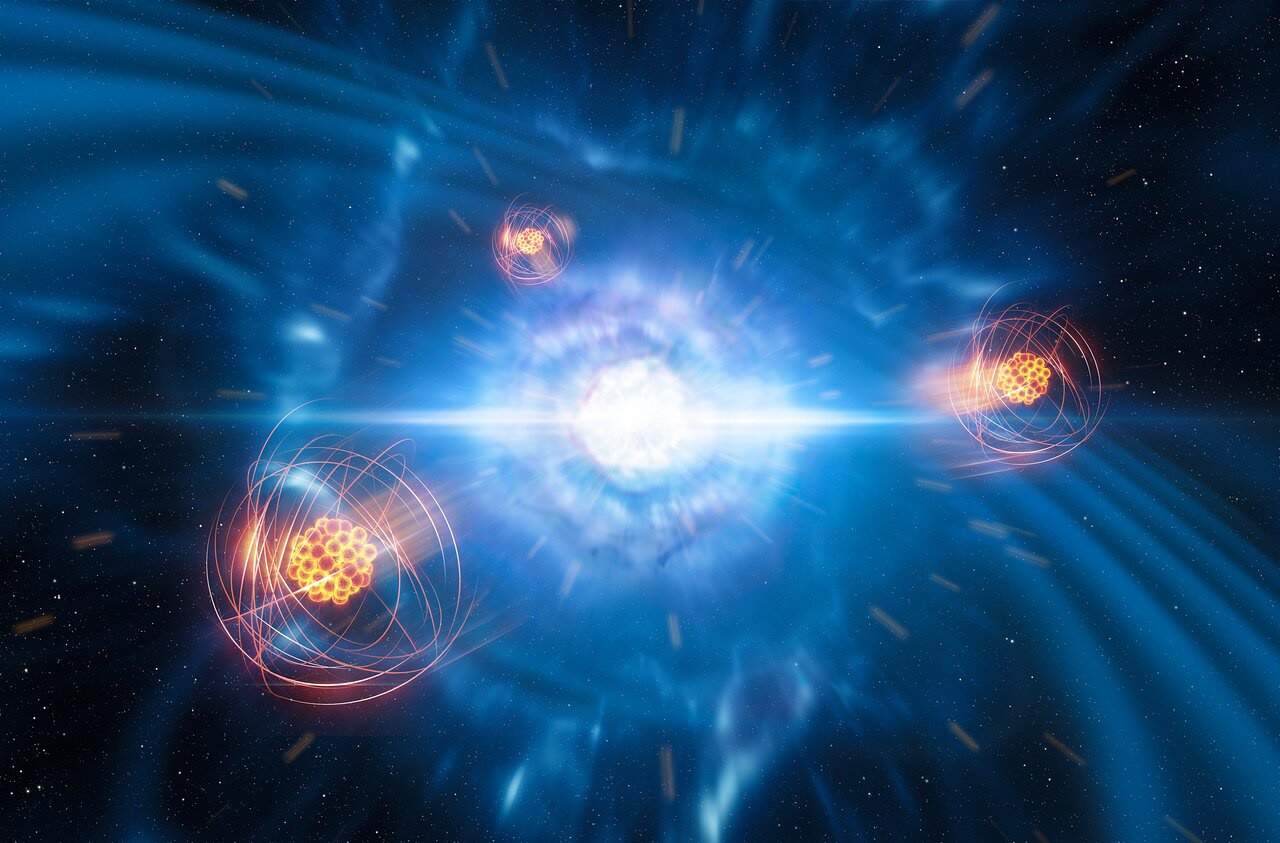Exploding stars alone cannot account for rapid heavy-element production, study reveals
Exploding stars alone cannot account for the abundance of heavy elements produced by the rapid neutron capture process, a new study has revealed. An international team of researchers, led by Anton Wallner at the Australian National University, came to this conclusion after analysing the abundances of plutonium and iron isotopes in a deep-sea crust sample. Their research suggests that other cataclysmic events, such as neutron star mergers, could be responsible for creating some heavy elements.
Elements heavier than iron form in astrophysical objects where nuclei are able capture neutrons in succession. For about half of the heavy nuclides, this neutron capture occurs slowly in stellar cores in what is called the “s-process” of nucleosynthesis. The other heavy nuclides – including actinides such as plutonium – are created rapidly in much more violent environments via the “r-process”.
Exactly where the r-process can occur is a subject of some debate. Some astronomers argue that it can only occur within certain types of supernovae (exploding stars), while others suggest that violent events such as merging neutron stars must be at least partially responsible for the heavy elements around us.
Wallner’s team has shed new light on this debate by analysing a core sample of Earth’s crust, taken from 1500 m below the surface of the Pacific Ocean. It contains a geological record spanning the past 10 million years and the researchers measured the abundance of two specific nuclides in the rock.
Iron and plutonium
One was iron-60, which is produced within the cores of massive stars, but is only ejected into space when the stars explode as supernovae. It has a half-life of 2.6 million years, so any iron-60 found in Earth’s crust must have been thrown out from supernovae relatively local to the solar system. The second nuclide the team looked for was plutonium-244, which can only be produced through the r-process. It has a half-life of 80.6 million years, so plutonium-244 in Earth’s crust can originate from far older, more distant events.READ MORE

Within their sample, Wallner and colleagues detected two distinct influxes of iron-60, suggesting that two local supernovae occurred in the past 10 million years. Each of these events also deposited smaller amounts of plutonium-244, with similar ratios between nuclides for each event. Although the data show that both nuclides are associated with exploding stars, the ratios of plutonium-244 to iron-60 measured for both events are lower that would be expected if the nuclide were produced in supernovae alone.
This suggests that plutonium-244 and other r-process nuclides are made in astrophysical events additional to supernovae. Among the most popular ideas is that r-process nuclides are produced during neutron star mergers – such as the event detected in 2017 by gravitational-wave and conventional telescopes. Future multimessenger observations of such mergers could therefore provide crucial information about the origins of heavy elements.
The research is described in Science.
FROM PHYSICSWORLD.COM 27/5/2021

Δεν υπάρχουν σχόλια:
Δημοσίευση σχολίου